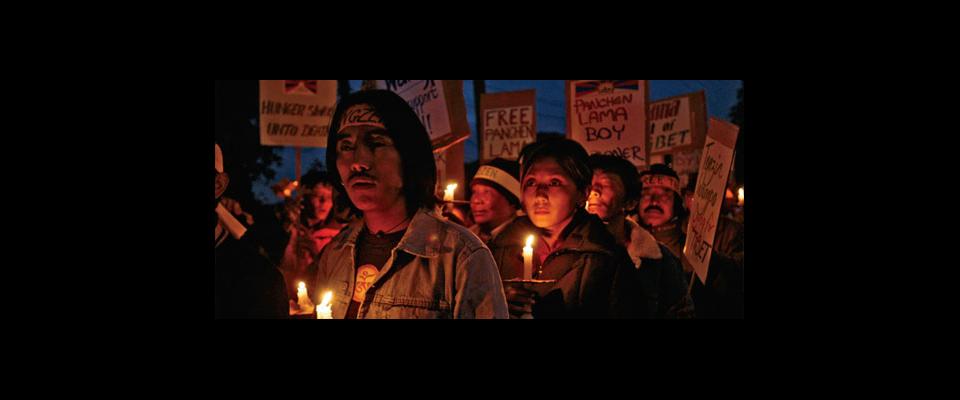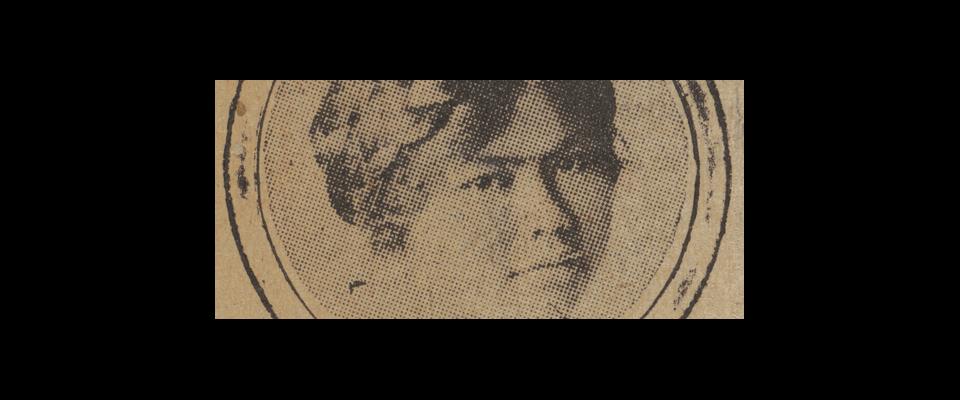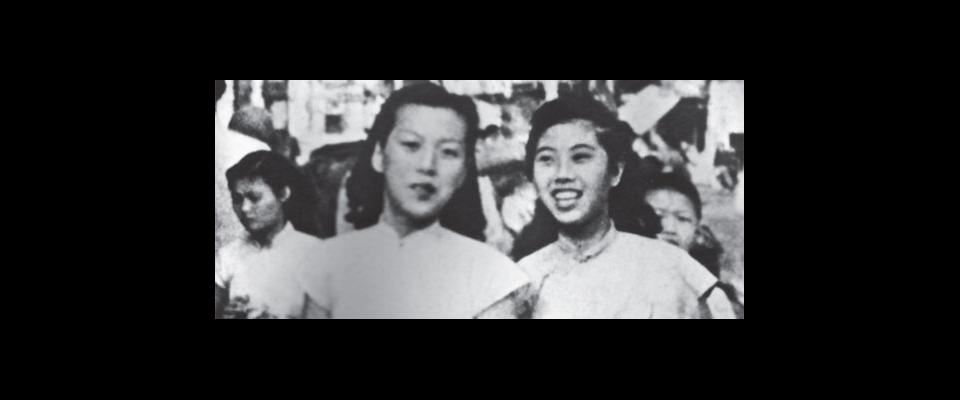A new film by young Tibetans challenges the mythic Lhasa of patient and tragic Buddhists
When the Dalai Lama fled to India after the Chinese takeover in 1959, most Tibetans, including filmmaker Tenzing Sonam’s father, thought exile would last a few years at worst. “My father passed away in India,” says Sonam, M.J. ’85, who grew up there. “The generation that has a memory of Tibet before the Chinese is almost gone.” Sonam and Ritu Sarin’s feature film about the younger generation, Dreaming Lhasa—one of the first by a Tibetan about Tibetans—is opening in the Bay Area this summer after runs in New York and London, where it picked up a Best of the Fest at the Human Rights Watch International film festival.
For some of these young Tibetans, Shangri-La is no longer Lhasa but America. “It becomes an obsession,” says Sarin. One character in the film pretends to be a monk in the hopes of getting a visa at the American consulate. “The consular officials have become much more savvy,” she says. “If someone says he’s a monk, they often ask them to tie their robes to make sure they know what they are doing.” In another scene, a foreign tourist comes on to an ex-monk when she hears he has been in a Chinese prison. “It’s the refugee groupie mentality,” chuckles Sonam. “And monks have married Western women and come to America and Europe. Of course, they then become ex-monks.”
Tibetans have formed some 40 sizable communities in North America, including in New York, where one of the film’s central characters, Karma, is a young filmmaker. Karma, played by actor Tenzin Gyatso, travels to the Dalai Lama’s home base in India, Dharamsala, to make a documentary about Tibetan political prisoners. There Karma finds herself caught in the tensions between local boy Jigme, who wants to be a rock star, and Dhondup, an ex-monk who has escaped from a Tibetan prison. Gyatso herself came to America at the age of 4 and was working in a Virginia bank when she was cast.
Ironically, though many Tibetans never felt quite at home in India, in America “they find themselves really drawn to the Indian community,” says Sarin. “They love Indian foods and Indian movies.” It’s also the first time they have really encountered a large Chinese population, and conflicts have broken out during protests outside the Chinese consulate. But for many, the most surreal aspect of living in America is being turned into a “Free Tibet” sticker on the bumper of some Toyota Corolla.
“For most Americans, it’s a mystical place because a huge body of literature exists that makes it so,” says Orville Schell, author of Virtual Tibet. “We’ll always be in love with those books. As a result, this particular piece of geography will always be tinged with nostalgia.” But in Dreaming Lhasa, fights break out in discotheques and young men fritter away the hours playing pool in Dharamsala, which has become a mecca for backpackers looking for discos and druggie raves in the shadow of the Dalai Lama. The film forcefully shakes the image of Tibetans as patient, philosophical, and tragic Shangri-La Buddhists, the stoic sherpas for Westerners climbing spiritual mountains.
This vision of Tibet remains frozen in the popular imagination, but the country itself is changing rapidly. Sonam has been to Lhasa. “It’s a Chinese city,” he says flatly. “It was one of the most depressing experiences of my life.” Schell says that after the years of overt repression of monks and nuns, China is trying to win the propaganda wars by “Disney-fying Tibet” into a tourist destination. He has heard they’ve even translated his book into Chinese to understand why the vision of Tibet remains so seductive to the West.
Lhasa also looms in the young Tibetans’ imagination, whether in Berkeley or Dharamsala, like a fog-enshrouded mountain offering tantalizing glimpses of the future. But Tenzing Sonam doesn’t know if the Jigmes and Karmas whose stories he tells in Dreaming Lhasa could actually live in Lhasa Reality. He’s not even sure, if Tibet were to become autonomous, whether he would return. “I’d definitely go back and try to see if I could survive there,” he says. “But then again, I have the option of leaving.”
From the July August 2007 Summer Travel Issue issue of California.





















